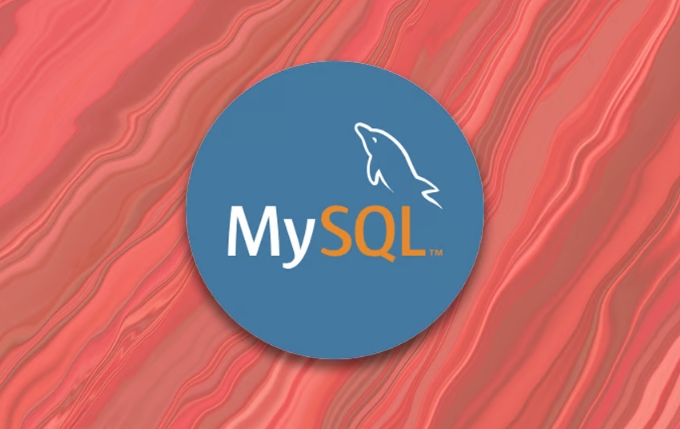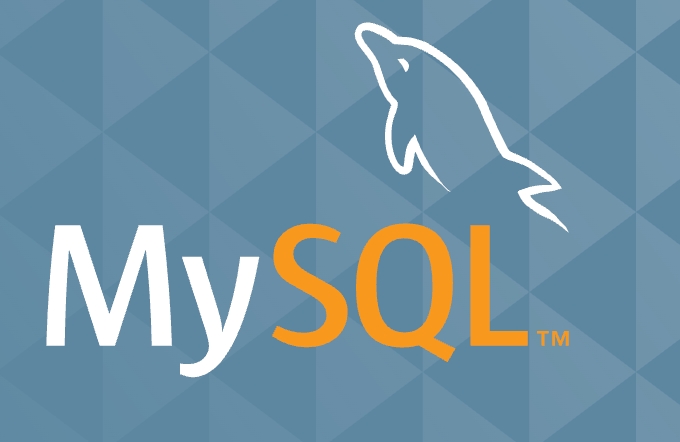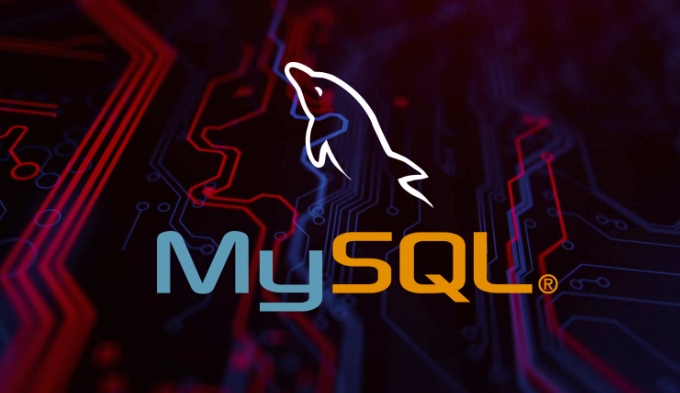MySQL does not support NTILE functions, but can be implemented through variable simulation. 1. NTILE(n) is a window function that sorts data equally and divides n groups and assigns group numbers; 2. MySQL 8.0 still does not support NTILE, and needs to be simulated manually: sort first, calculate the total number of rows, and divide groups with row numbers; 3. Practical applications such as sales rating and grade grading; 4. Notes include ensuring data sorting, clarifying the number of groups, and processing boundary values.

MySQL's NTILE function is actually not a function natively supported by MySQL, but a window function that is more common in databases such as PostgreSQL and SQL Server. If you encounter the keyword "NTILE" when using MySQL, you usually want to implement similar functions, such as dividing data into groups or buckets.

Here are some practical usages and alternatives you may be concerned about.
What is an NTILE function?
NTILE(n) is a window function. Its function is to divide the result set into n groups evenly according to the specified sorting method, and assign a group number (from 1 to n) to each row. If the score cannot be completely evenly divided, the previous group will have one more row.

For example:
| name | score |
|---|---|
| Alice | 95 |
| Bob | 90 |
| Carol | 85 |
| Dave | 80 |
| Eve | 75 |
If we use NTILE(2) to group by score, the first two rows will be divided into group 1 and the last three rows will be divided into group 2 (or, in turn, depending on the specific implementation details).

How to implement NTILE function in MySQL?
MySQL did not support window functions before version 8.0, including NTILE . But starting with MySQL 8.0, it has started to support some window functions, but it still does not support NTILE() . So you need to simulate manually.
Method 1: Use variables to simulate NTILE
The basic idea is to sort the data first, then calculate the total number of rows, and then divide the groups according to the row number.
For example, we want to divide students into 4 groups by grade:
SELECT
name,
score,
CEIL(row_num / (total_rows / 4)) AS group_id
FROM (
SELECT
name,
score,
@row := @row 1 AS row_num,
(SELECT COUNT(*) FROM students) AS total_rows
FROM students, (SELECT @row := 0) r
ORDER BY score DESC
) AS ranking;illustrate:
-
@rowis an autoincrement variable used to generate line numbers. -
total_rowscalculates the total number of people. -
CEIL(row_num / (total_rows / 4))maps line numbers to group numbers from 1 to 4.
Note: When this method is not a multiple of 4, the first few groups may have one more row.
Examples of practical application scenarios
Scenario 1: Sales Performance Ranking Group
You want to divide sales personnel into four levels based on sales from high to low, so as to facilitate performance evaluation.
You can sort by sales first and then assign group numbers using the above method. This way, the number of people in each group is roughly equal, which is suitable for sampling analysis or rating.
Scene 2: Exam score grading
The school wants to grade students A/B/C/D, and try to average the number of students at each level. This is also possible to use similar simulation methods to achieve this.
Notes on using NTILE alternatives
- Data must be sorted : NTILE is grouped based on ordered data, so you must clearly sort the fields before use.
- It is best to determine the number of groups in advance : for example, if you want to divide into 4 groups or 5 groups, this will affect the final grouping logic.
- When data distribution is uneven, pay attention to processing boundary values : for example, if there are duplicate sorting field values, should they be classified into the same group? This requires additional judgment.
Summarize
Although MySQL does not directly support the NTILE() function at present, we can simulate similar effects by adding mathematical operations to variables. Although this method is a little more complex, it is very practical in actual projects, especially in scenarios such as data analysis, ranking grouping, and level division.
Basically all this is it. The key is to understand the grouping logic and flexibly adjust it in combination with specific business needs.
The above is the detailed content of mysql ntile function. For more information, please follow other related articles on the PHP Chinese website!

Hot AI Tools

Undress AI Tool
Undress images for free

Undresser.AI Undress
AI-powered app for creating realistic nude photos

AI Clothes Remover
Online AI tool for removing clothes from photos.

Clothoff.io
AI clothes remover

Video Face Swap
Swap faces in any video effortlessly with our completely free AI face swap tool!

Hot Article

Hot Tools

Notepad++7.3.1
Easy-to-use and free code editor

SublimeText3 Chinese version
Chinese version, very easy to use

Zend Studio 13.0.1
Powerful PHP integrated development environment

Dreamweaver CS6
Visual web development tools

SublimeText3 Mac version
God-level code editing software (SublimeText3)
 How to use PHP to develop a Q&A community platform Detailed explanation of PHP interactive community monetization model
Jul 23, 2025 pm 07:21 PM
How to use PHP to develop a Q&A community platform Detailed explanation of PHP interactive community monetization model
Jul 23, 2025 pm 07:21 PM
1. The first choice for the Laravel MySQL Vue/React combination in the PHP development question and answer community is the first choice for Laravel MySQL Vue/React combination, due to its maturity in the ecosystem and high development efficiency; 2. High performance requires dependence on cache (Redis), database optimization, CDN and asynchronous queues; 3. Security must be done with input filtering, CSRF protection, HTTPS, password encryption and permission control; 4. Money optional advertising, member subscription, rewards, commissions, knowledge payment and other models, the core is to match community tone and user needs.
 How to set environment variables in PHP environment Description of adding PHP running environment variables
Jul 25, 2025 pm 08:33 PM
How to set environment variables in PHP environment Description of adding PHP running environment variables
Jul 25, 2025 pm 08:33 PM
There are three main ways to set environment variables in PHP: 1. Global configuration through php.ini; 2. Passed through a web server (such as SetEnv of Apache or fastcgi_param of Nginx); 3. Use putenv() function in PHP scripts. Among them, php.ini is suitable for global and infrequently changing configurations, web server configuration is suitable for scenarios that need to be isolated, and putenv() is suitable for temporary variables. Persistence policies include configuration files (such as php.ini or web server configuration), .env files are loaded with dotenv library, and dynamic injection of variables in CI/CD processes. Security management sensitive information should be avoided hard-coded, and it is recommended to use.en
 Securing MySQL Connections with SSL/TLS Encryption
Jul 21, 2025 am 02:08 AM
Securing MySQL Connections with SSL/TLS Encryption
Jul 21, 2025 am 02:08 AM
Why do I need SSL/TLS encryption MySQL connection? Because unencrypted connections may cause sensitive data to be intercepted, enabling SSL/TLS can prevent man-in-the-middle attacks and meet compliance requirements; 2. How to configure SSL/TLS for MySQL? You need to generate a certificate and a private key, modify the configuration file to specify the ssl-ca, ssl-cert and ssl-key paths and restart the service; 3. How to force SSL when the client connects? Implemented by specifying REQUIRESSL or REQUIREX509 when creating a user; 4. Details that are easily overlooked in SSL configuration include certificate path permissions, certificate expiration issues, and client configuration requirements.
 How to use PHP to develop product recommendation module PHP recommendation algorithm and user behavior analysis
Jul 23, 2025 pm 07:00 PM
How to use PHP to develop product recommendation module PHP recommendation algorithm and user behavior analysis
Jul 23, 2025 pm 07:00 PM
To collect user behavior data, you need to record browsing, search, purchase and other information into the database through PHP, and clean and analyze it to explore interest preferences; 2. The selection of recommendation algorithms should be determined based on data characteristics: based on content, collaborative filtering, rules or mixed recommendations; 3. Collaborative filtering can be implemented in PHP to calculate user cosine similarity, select K nearest neighbors, weighted prediction scores and recommend high-scoring products; 4. Performance evaluation uses accuracy, recall, F1 value and CTR, conversion rate and verify the effect through A/B tests; 5. Cold start problems can be alleviated through product attributes, user registration information, popular recommendations and expert evaluations; 6. Performance optimization methods include cached recommendation results, asynchronous processing, distributed computing and SQL query optimization, thereby improving recommendation efficiency and user experience.
 Automating MySQL Deployments with Infrastructure as Code
Jul 20, 2025 am 01:49 AM
Automating MySQL Deployments with Infrastructure as Code
Jul 20, 2025 am 01:49 AM
To achieve MySQL deployment automation, the key is to use Terraform to define resources, Ansible management configuration, Git for version control, and strengthen security and permission management. 1. Use Terraform to define MySQL instances, such as the version, type, access control and other resource attributes of AWSRDS; 2. Use AnsiblePlaybook to realize detailed configurations such as database user creation, permission settings, etc.; 3. All configuration files are included in Git management, support change tracking and collaborative development; 4. Avoid hard-coded sensitive information, use Vault or AnsibleVault to manage passwords, and set access control and minimum permission principles.
 How to develop AI intelligent form system with PHP PHP intelligent form design and analysis
Jul 25, 2025 pm 05:54 PM
How to develop AI intelligent form system with PHP PHP intelligent form design and analysis
Jul 25, 2025 pm 05:54 PM
When choosing a suitable PHP framework, you need to consider comprehensively according to project needs: Laravel is suitable for rapid development and provides EloquentORM and Blade template engines, which are convenient for database operation and dynamic form rendering; Symfony is more flexible and suitable for complex systems; CodeIgniter is lightweight and suitable for simple applications with high performance requirements. 2. To ensure the accuracy of AI models, we need to start with high-quality data training, reasonable selection of evaluation indicators (such as accuracy, recall, F1 value), regular performance evaluation and model tuning, and ensure code quality through unit testing and integration testing, while continuously monitoring the input data to prevent data drift. 3. Many measures are required to protect user privacy: encrypt and store sensitive data (such as AES
 How to build an online customer service robot with PHP. PHP intelligent customer service implementation technology
Jul 25, 2025 pm 06:57 PM
How to build an online customer service robot with PHP. PHP intelligent customer service implementation technology
Jul 25, 2025 pm 06:57 PM
PHP plays the role of connector and brain center in intelligent customer service, responsible for connecting front-end input, database storage and external AI services; 2. When implementing it, it is necessary to build a multi-layer architecture: the front-end receives user messages, the PHP back-end preprocesses and routes requests, first matches the local knowledge base, and misses, call external AI services such as OpenAI or Dialogflow to obtain intelligent reply; 3. Session management is written to MySQL and other databases by PHP to ensure context continuity; 4. Integrated AI services need to use Guzzle to send HTTP requests, safely store APIKeys, and do a good job of error handling and response analysis; 5. Database design must include sessions, messages, knowledge bases, and user tables, reasonably build indexes, ensure security and performance, and support robot memory
 How to make PHP container support automatic construction? Continuously integrated CI configuration method of PHP environment
Jul 25, 2025 pm 08:54 PM
How to make PHP container support automatic construction? Continuously integrated CI configuration method of PHP environment
Jul 25, 2025 pm 08:54 PM
To enable PHP containers to support automatic construction, the core lies in configuring the continuous integration (CI) process. 1. Use Dockerfile to define the PHP environment, including basic image, extension installation, dependency management and permission settings; 2. Configure CI/CD tools such as GitLabCI, and define the build, test and deployment stages through the .gitlab-ci.yml file to achieve automatic construction, testing and deployment; 3. Integrate test frameworks such as PHPUnit to ensure that tests are automatically run after code changes; 4. Use automated deployment strategies such as Kubernetes to define deployment configuration through the deployment.yaml file; 5. Optimize Dockerfile and adopt multi-stage construction






